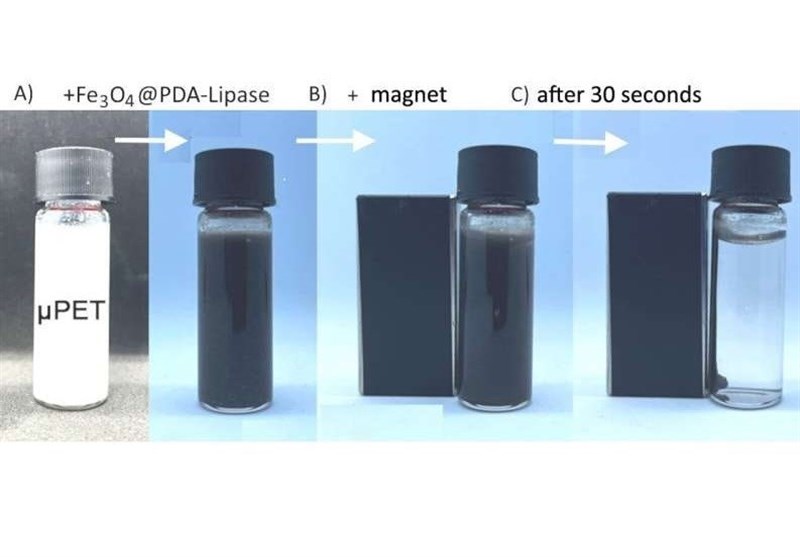Nanotech Solution to Remove Micro-, Nanoplastics from Water
TEHRAN (Tasnim) – Researchers at the University of São Paulo (USP) have created a breakthrough nanotechnology method to remove hazardous micro- and nanoplastics from water, offering a potential solution to one of today’s most pervasive environmental issues.
Microplastics, fragments less than 1 millimeter in size, and even smaller nanoplastics, are widespread pollutants. Found in water, soil, and air, these particles are present in the bodies of animals and humans and originate from everyday consumer products and wear on larger materials. A significant source is wastewater from washing synthetic fabrics, which allows microplastics to enter water systems, soils, and even the atmosphere. Nanoplastics, which are a thousand times smaller than microplastics, pose a more insidious risk as they can bypass biological barriers and affect vital organs, according to recent studies.
Henrique Eisi Toma, a professor at USP’s Institute of Chemistry, said, “Nanoparticles aren’t visible to the naked eye or detectable using conventional microscopes, so they’re very hard to identify and remove from water treatment systems.”
The USP team’s approach utilizes magnetic nanoparticles coated with polydopamine, a compound that adheres firmly to plastic fragments. The process, inspired by mussel adhesive properties, allows magnetic particles to capture and extract plastic particles from water with a magnet. "Polydopamine adheres firmly to fragments of plastic in water and enables the magnetic nanoparticles to capture them. This undesirable material can then be removed from the water with a magnet," said Toma.
Proven effective for micro- and nanoplastic removal, the process also aims to degrade plastics using enzymes like lipase, which breaks down polyethylene terephthalate (PET). This approach decomposes plastics into reusable smaller molecules. “Our goal isn't just to remove plastic from water but also to contribute to its recycling in a sustainable manner,” Toma explained.
PET, commonly used for plastic bottles, releases toxic compounds when it degrades. Toma’s study used magnetic nanoparticles synthesized with polydopamine coating to immobilize lipase. Real-time plastic degradation was monitored using hyperspectral Raman microscopy.
Plastics, mainly fossil-fuel-derived polymers, dominate countless consumer products due to their affordability, flexibility, and durability. However, concerns over plastic waste have spurred interest in bioplastics from renewable sources. But, as Toma noted, bioplastics also fragment into micro- and nanoplastics, which can interact more directly with human biology and provoke biological reactions.
Additionally, Toma cautioned that bottled mineral water may contain more microplastics than tap water. "Treated potable water undergoes filtration, coagulation, and flotation, whereas mineral water isn’t processed in these ways. If the environment is contaminated by bioplastics, these particles will reach the consumer," he said.
The scope of the problem is vast, and solutions are still developing. Toma and his team’s nanotechnology offers a promising advancement, urging further research and public action to tackle this pressing issue.






